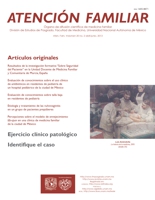Etiology and Treatment of Vulvovaginitis in Prepubertal Patients
Main Article Content
Abstract
Objective: describe the microbiological etiology of vulvovaginitis in prepubertal patients attended in the General Pediatrics consultation at the Mexico Children’s Hospital “Federico Gomez”. Material and methods: descriptive and longitudinal study. There were incorporated, from June 2007 until July 2009, into the study 36 girls with symptoms and clinical signs of vulvovaginitis, who in addition to meet the criteria of age had to be pre-pubescent. To those patients with vulvovaginitis supported clinical data had to carry out vaginal cultures for bacteria, direct examination in search of culture for fungi and fungal forms, general examination of urine, stool culture and Graham test. Results: the most frequent symptomatology was transvaginal discharge 86% and vaginal itching 83%. Within physical examination there were as more consistent data vaginal erythema in 94% and vaginal discharge in 89%. The Positive cultures for Escherichia coli were 88%. The most frequent was vulvovagnitis of nonspecific etiology. Conclusions: it was not possible to identify in the local or global literature treatment guides for such common pediatric condition. This is reflected in an inappropriate treatment, the recurrence of the condition, and the misuse of antibiotics.
